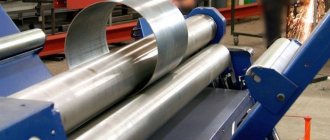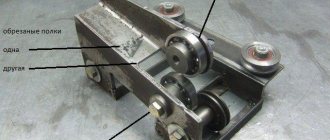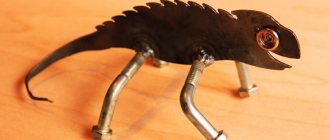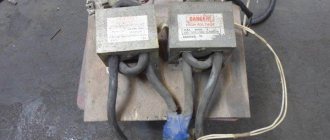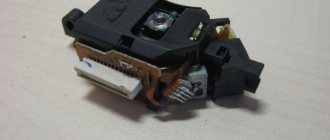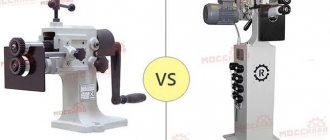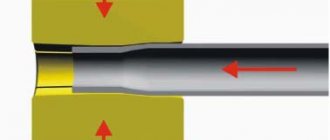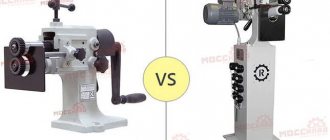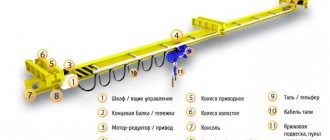A technological operation such as sheet metal rolling has remained common for quite a long time. Of course, the rollers used for sheet metal processing have undergone major changes since their invention, but the principle of their operation has remained virtually unchanged. The development of modern technologies has led to the fact that today on the market you can easily find equipment that allows you to perform such a complex technological operation as rolling, even at home.
Rolling sheet metal on an electromechanical machine
Features of the technology
Rolling, which can be applied to products not only made of metal, but also of other plastic materials (rubber, plastic, etc.), is a process necessary to give sheet blanks the required configuration. Despite the fact that the most common is sheet metal rolling, pipe rolling products can also undergo such a technological operation.
In this case, special equipment is used, the main working elements of which are shafts acting on the sheet metal workpiece. If it is necessary to give it a cylindrical shape, the technological operation is called rolling (or rolling). When it is necessary to increase the diameter of the pipe, the procedure is called flaring.
Working principle of 3 roll plate bending machine
In industrial enterprises, equipment with electric or hydraulic drives is used to perform rolling or flaring operations, and at home, manually driven machines are used for this, which can be either serial or home-made. Several factors contribute to the high popularity of technological operations such as rolling and flaring, which involve deforming metal in a cold state.
- Steel or other metal from which the processed products are made are not exposed to temperature and, accordingly, do not change their original characteristics.
- Internal cracks do not form in the structure of the material that has been subjected to this treatment.
- The processed product is deformed evenly over its entire surface.
- Using cold deformation, the process of which can be controlled, products are manufactured with the most accurate geometric parameters.
Thanks to the listed advantages, using these technological operations, they process not only large-sized, but also miniature products made of steel and other metals (such as, for example, jewelry parts).
Roller components
There are two types of rolling equipment:
- machines with a pressure roller, most often located in the middle;
- installations with tools placed eccentrically.
The first type is used for rolling thick metal. The second option is used when workpieces are deformed by no more than 2.5 mm.
In the equipment under consideration, a significant difference is the relative arrangement of the rolls: symmetrical or asymmetrical. Asymmetric machines are more versatile. They are used not only for rolling cylinders, but also for a variety of edge designs.
In practice, a scheme with three symmetrically located rolls is more often used, since it is more technologically advanced during maintenance. This type of rolling machine with external drive has the following components:
- electric motor;
- clinometer transmission or gearbox;
- a shaft with a main roll placed on it;
- side stands with bearing assemblies: rolling bearings are used in high-speed rollers, and sliding bearings are used for equipment power;
- two driven bottom rolls;
- bed with two support posts;
- protective casing for receiving semi-finished products during machine operation;
- roller control system.
The technological parameters of the equipment are adjusted by changing the gap between the rolls. In manual models this is done using a screw or ratchet mechanism, in automatic machines - programmatically.
Equipment used
The equipment used for rolling is distinguished not only by its versatility, but also by its simplicity of design, so it is not difficult to make it yourself. Of course, homemade rolling machines are optimal for home use, and to equip a production workshop, where the load on such equipment is quite large, it is best to purchase serial models of rollers, which are presented in a wide variety on the modern market.
Both serial and home-made models of machines with which rolling is carried out work on the principle of rolling sheet material around the main roll located on top. Side rollers also take part in this process, which can be moved, thereby adjusting the diameter of the formed shell.
The rollers of this machine are rotated manually, and the approach of the upper roller is done using two handles
Important characteristics of rollers are the radius of their working elements - the rollers, as well as the greatest thickness and width of the workpiece. The radius of the rolls, in particular, influences such a parameter as the minimum bending radius of the workpiece. The larger the diameter of the rolls, the correspondingly greater the value of the minimum bending radius of the sheet metal workpiece. The value of the minimum bending radius is also influenced by the thickness of the sheet itself. As a rule, for rollers, the minimum bending radius of a sheet stock should be 5-10 times its thickness.
Taking into account the high loads that rolls experience during operation, only high-strength steel is used for their manufacture, which can significantly improve their performance characteristics. Based on the number of working elements, two-, three- and four-roll machines are distinguished, with the last two types being the most popular.
Main differences between 3 and 4 roll machines
3-roll sheet bending rollers, the working elements of which can be arranged symmetrically and asymmetrically, although they have a reasonable price, have the following disadvantages:
- low rolling speed (no more than 5 m/min);
- the difficulty of processing workpieces less than 6 mm thick, which can simply slip between the rolls;
- lack of exact coordinates at the clamping point of the workpiece.
The rollers on which an additional fourth shaft is installed are free from all such shortcomings. Due to reliable clamping, the metal sheet blank does not slip between the rollers during processing. This ensures a high rolling speed of 6 m/min or more.
The machine with 4 rolls is capable of producing, in addition to cylindrical, oval and polycentric workpieces
Rollers of this type are usually equipped with automated control systems, which has a positive effect not only on their productivity, but also on the accuracy of the processing performed. The big and, perhaps, the only disadvantage of such a device is its high cost.
Making equipment yourself
Anyone can make such machine equipment on their own.
Before using the metal rolling machine, you should watch the training video
What building materials and how can this be made:
- The first step is to take a frame made of pipes or a bent metal profile, which will play the role of a frame.
- Next, you need to prepare a U-shaped metal profile (it is best to use hardened steel for this) to create a vertical support for the machine.
- The deforming unit of the rolling unit must be installed in the open (top) part of the metal profile. You can secure it using a clamp with a thread.
- Under the bed you need to secure the bottom of the metal profile P.
- Next, you need to take the transmission chain, without which the machine will not function, and mount it on the stars. It is necessary to tension the chain very well and check the ease of its movement.
- Now you need to mount the feed handle and attach the entire mechanism to the frame using rolling bearings.
The machine is ready. It is important to properly think through a special mechanism in its design that will make it possible to regulate the gap between the rollers. Then it will be possible to process metals of various thicknesses. You can make the most complex rollers yourself. The main thing is to prepare drawings of the machine equipment and follow the instructions.
Having studied the drawings of homemade machines, it is not difficult to make equipment that is ideally suited and will help solve the tasks.
Standard profile pipes of square or rectangular cross-section, due to their high bending strength and low weight, are widely used in construction. In cases where the permissible load values are exceeded, which occur during strong bending, the products become deformed and break. The use of pipes with a reinforced profile allows you to eliminate negative consequences.
Classification of rollers by drive type
Based on the type of drive used, equipment for rolling sheet metal blanks is divided into the following categories:
- manual;
- electrical;
- hydraulic.
The simplest in design are manually driven rollers; it is these that home craftsmen most often assemble with their own hands for their own needs.
On simple three-roll rollers, clamping the workpiece, rotating the shafts and forming the bend radius is done manually
Significant advantages of such a device, which does not require any additional power for its operation, are:
- compactness and, accordingly, high mobility;
- reliability;
- ease of operation and maintenance;
- low cost (especially if the rollers are assembled by yourself).
Among the disadvantages of machines of this type, it should be noted:
- low productivity;
- the impossibility, especially in the case of home-made machines, to roll products made of sheet metal of large thickness (more than 2 mm);
- the need to apply significant physical effort to bend steel sheets.
Electromechanical double-sided rollers with program control
Machines equipped with an electric drive are more productive and efficient in operation. Of course, their cost, even if they are made by hand, is higher than the price of hand rollers, but they allow processing sheet products of considerable thickness.
The most powerful are the hydraulically driven rollers. The capabilities of such machines, which are distinguished by their large dimensions, make it possible to successfully roll sheet metal blanks of even very significant thickness. Devices of this type are usually installed in industrial enterprises, where high demands are placed on the power, reliability and functionality of the equipment.
Industrial rollers with hydraulic drive
Rules for strengthening profile pipes
It is almost impossible to do without a device such as pipe rolling equipment in cases where you need to carry out repairs yourself, which will require the use of curved pipes.
To do this, you need to purchase a unit of this type or use homemade profile benders, the design of which is quite simple.
It also makes sense to ask the question of how to make a machine for bending metal because store-bought products are expensive, so buying them (especially if they are needed only for home use) is not always rational. In order to make high-quality homemade rolling, you can study the theory, watch a video on this topic, but the main thing is to listen to the advice of those who have already achieved excellent results.
When using the machine, please follow safety instructions
Naturally, to build your own rollers, you need:
- Have relevant knowledge;
- Have certain skills in manufacturing and using various technical devices;
- Prepare drawings and materials.
Do-it-yourself rollers can even be created from improvised building materials, which are almost always available in any garage or workshop at home. Moreover, such equipment, if everything is done taking into account all the recommendations, will work no worse than products from the store.
Roller specifications
When designing homemade manual three-roll rollers, it is necessary to take into account the required operational and technical qualities. The characteristics of a suitable factory model can be taken as a basis for analysis. But at the same time, its parameters must be adapted to the actual characteristics of the homemade design.
First of all, the dimensions of the machine are taken into account. They depend on the length of the shafts and affect the maximum width of the processed sheets. It must be remembered that a manual mechanism will be used as a drive, which must be done with your own hands. Therefore, usually the working width of the shaft does not exceed 1.2 m. The weight of the homemade structure will only affect the possibility of its transportation.
In addition to these indicators, it is necessary to take into account the following parameters that manual three-roll rollers must have:
- diameter of working shafts. This indicator affects the maximum possible radius of curvature of the processed material;
- degree of distance between the upper shaft and the lower guides;
- distance between the lower shafts;
- material supply speed.
When choosing a specific model of three-roll sheet bending rollers, you should accurately calculate the rigidity of the structure. Despite the fact that the pressure is mainly exerted on the shafts, the frame also experiences certain mechanical loads. Therefore, the choice of manufacturing materials and design of this machine model must be approached with special care.
The presence of three shafts in the design is optimal. When installing additional components, the degree of load on the manual drive mechanism increases, which is extremely undesirable for home-made models.
Rollers: operating principle
The key working mechanism of the device is a rotating cylinder through which hot sheets of metal are passed and bent. Rolling machines can be equipped with cylinders from 2 to 5 pieces , but three-roll and four-roll products are most often used.
The parts are bent through the action of the third rear shaft, and the fixing radius depends on the distance between the upper and rear shaft.
Sometimes metal rollers break and require replacement. When working with iron, the machine must be constantly heated, and the layers of iron after the rollers go into the furnace, they are heated there, and then pumped again. After that they go back to the machine.
After roller processing, the cross-section of the metal is reduced and it becomes longer under the influence of high metal temperature and degree of pressure.
To obtain a cylindrical product, the rear shaft must be adjusted parallel to the front one, and to make a cone, the rear shaft must be set at an angle relative to the front one.
There are roller models that can be used to process metal directly on the table, but they are not very functional. Working with them can be simplified using fasteners . The cost of rollers depends on their dimensions. And if you decide to make the machine yourself, you will save a lot.
The functions of modern rolling machines, home-made and factory-made, three-roll and four-roll, are as follows:
- the ability to bend pipes up to 160 degrees;
- working with metal pipes;
- deformation of pipes regardless of their diameter.
Types of sheet metal rollers
Sheet-leveling machines for working with metal workpieces can be different, the scope of their application depends on the technical characteristics and the range of tasks expected to be solved:
- the dimensions and diameter of the shafts depend on the type of structure, depending on this the radius of the possible bend will change;
- the length of the shafts determines the width of the workpiece that can be worked with at one time;
- the drive determines the thickness of the products suitable for processing.
Much will depend on the design features of the machines.
For example, when working with products of unusual shapes, the ability of the working shafts to change position is directly affected. So two identical machines from the same company can be diametrically different.
Machines are divided among themselves depending on technological capabilities and technical characteristics. Machines for working with metal can be divided into several main categories:
- two-roll;
- three-roll;
- four-roll.
The first type is the simplest. Their design is based on two working shafts and a rigid frame; the shafts are located parallel to each other. The one on top is always half the size. It is preferable to use steel as a material for it.
The workpiece is pressed by the lower shaft and scrolled, which gives the product the desired shape. The possibilities of bending metal are formed depending on the nature of the rotation of the shafts, which is why two identical machines can differ from each other in terms of efficiency. The machine is adjusted mechanically, so the radius of the product can be set in advance.
More often, such a machine processes cylindrical structures rather than conical ones.
The second type can be divided into symmetrical and asymmetrical. The work involves the principle of rolling a workpiece sheet around one of the shafts, which is the main one in the design.
Electromechanical machines with three shafts are sometimes called power machines; they are more massive in design and have a higher tensile strength, unlike a manual drive. Such equipment can be used to manufacture products on an industrial scale. For home workshops, such designs are suitable for processing copper or aluminum up to 4 mm thick.
Four-roll rolling machines are designed with one more shaft at the very bottom, which makes bending the metal easier. This is the type of machine most often used for industrial processing. Here, the thickness of the blanks can reach 75 mm, the shape can be simple or geometrically complex - both can be accurately reproduced in the same way.
Numerical control facilitates the setting and adjustment of certain parameters during the production process of the product.
This is a professional tool for working with metal in every way.
Classification of machines
According to the bending method, rollers are:
- segmental, where the pipes are bent under the action of one pulling segment;
- mandrels, which deform thin-walled pipes;
- spring. Thanks to the presence of a spring, the plastic bends without deformation;
- crossbow, which are designed for pipes of one diameter or another.
- Manual . Such machines are the most convenient and practical; they do not need to be connected to the network. Clamps and feed rollers with a chain drive are attached to their main frame. Manual profile machines are durable, reliable, compact, easy to adjust and have an affordable price. Manual rollers have a subcategory for jewelry; they are used for rolling and rolling jewelry blanks;
- Hydraulic . Hydraulically driven devices with high power, which are characterized by high performance. Their disadvantage is their dimensions; you cannot easily move such a unit with your own hands;
- Electrical . High productivity is achieved through the operation of an electric motor, although the principle of operation of the machine is no different from a manual one. Most often they are used on an industrial scale, since such rollers have a considerable price.
If you purchase or make a machine with your own hands for small household needs, then it is desirable that it have the following characteristics:
- mobility and light weight;
- compactness;
- economical in terms of energy consumption, since a powerful device can damage home wiring.
Operating principle of a metal rolling machine
The main component of the machine equipment is the cast frame. It can be steel or cast iron. A special deformation mechanism is installed on the frame, which consists of 3-4 rollers. Three-rollers are usually used. Two rollers do not move; the third roller rotates during operation.
In addition, the movable shafts can move vertically.
The roller is fixed on top of the frame according to a scheme that allows you to quickly remove it if necessary or quickly adjust it for the production of pipes with different cross-sections. This structural element is adjusted using a single thumbscrew.
The metal rolling machine has a long service life
If the work rollers have grooves , you can bend them:
Manual metal bending equipment traditionally has 3 rollers, but there is a type of pipe bender with 4 rollers. But hydraulic machines are always created with 4 rolls.
Making pipes on any unit is quite simple:
- Clamping the sheet with a special handle on the machine equipment between the shaft in the middle and at the edge.
- Pressing the workpiece with the third roller.
- Rotate the roll manually or start the engine.
Passing through the rollers at a certain speed, the metal workpiece bends at the required angles. To build pipes or gutters at home, you need to use a manual unit. By and large, there is no need to even purchase it (although their price is low), since you can assemble a homemade machine and use it to strengthen the profile pipe.
